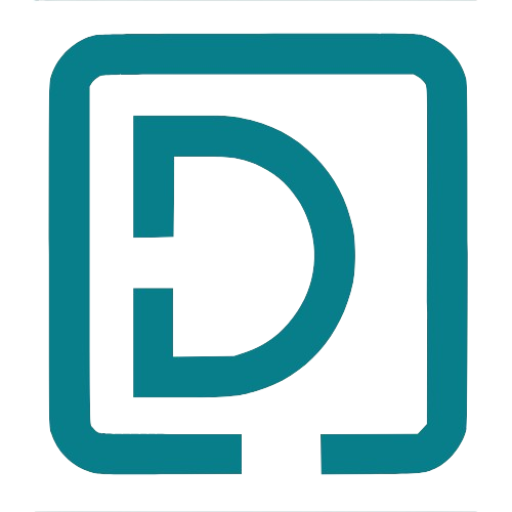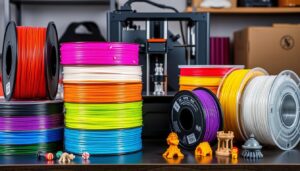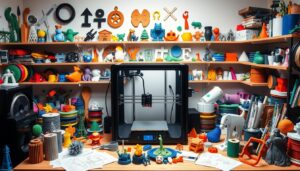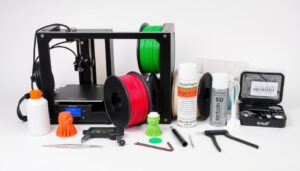Imagine turning on your 3D printer, feeling excited to see your ideas come to life. But instead, you get a tangled mess of plastic. This is a common problem for many 3D printing beginners.
The secret to great 3D prints is in the settings. Making the right changes can make a huge difference. Whether you’re printing for fun or work, getting your settings right opens up new possibilities. Your projects will turn out exactly as you dreamed.
Key Takeaways
- Proper settings can significantly improve print quality.
- Understanding your printer’s capabilities is essential.
- Each print job may require unique adjustments.
- Experimentation is key to perfecting your settings.
- Resources and communities can provide valuable insights.
Understanding 3D Printing Basics
3D printing is a big change in making things. It turns digital designs into real objects. It works by adding layers of material, making complex shapes possible. Knowing the basics of 3D printing is key for those interested in this new field.
What is 3D Printing?
3D printing is about adding layers of material to make a 3D object. It starts with a digital file, often made with 3D modeling software. The printer then uses this file to create the object, layer by layer.
This is different from old ways of making things, which often take away from a solid block.
Types of 3D Printing Technologies
There are many 3D printing technologies, each with its own benefits and uses. The main ones are:
- Fused Deposition Modeling (FDM): Uses heated thermoplastic filaments that are extruded layer by layer.
- Stereolithography (SLA): Employs a laser to cure liquid resin into hardened plastic.
- Selective Laser Sintering (SLS): Uses a laser to fuse powdered material into solid forms.
- Digital Light Processing (DLP): Similar to SLA but uses a digital light projector to cure resin.
Choosing the right technology depends on what you need for your project.
Importance of Print Settings
Print settings are very important. They affect the quality, strength, and look of the final product. Things like layer height, print speed, and temperature are key.
Adjusting these settings can make your prints better and your projects more successful.

Key Settings to Optimize for Quality
Improving 3D printing quality starts with fine-tuning key settings. Layer height, print speed, and infill density are crucial. They help achieve top-notch results and avoid common problems.
Layer Height and Resolution
Layer height greatly affects print resolution. Smaller layers mean finer details and a smoother finish. But, they also increase printing time.
On the other hand, larger layers result in faster prints but may lose some detail. Finding the perfect balance is key for quality.
Print Speed and Temperature
Adjusting print speed is vital for consistent extrusion and layer adhesion. Slower speeds improve quality, especially for detailed prints, by allowing even material settling.
Temperature settings also play a role. The right temperature ensures filament flows well. Wrong temperatures can cause under-extrusion or warping, harming print quality.
Infill Density
Infill density affects a print’s strength and material usage. Higher density means stronger prints but uses more filament. The right infill percentage balances strength with efficiency.
For everyday use, 20% infill is often enough. But, certain applications might need adjustments for the best results.
Troubleshooting Common Issues
Fixing 3D printing problems can be tough, especially when prints fail unexpectedly. Knowing common issues and how to fix them is crucial for great results. By spotting symptoms and tweaking settings, you can make your prints better.
Identifying Print Failures
It’s important to know the signs of print failures. Some common problems include:
- Warping: When the print edges pull away from the plate.
- Stringing: Fine filament strands left between parts.
- Layer Separation: Gaps or layers that don’t stick together.
Watching the print closely helps you spot these issues. This lets you make the right changes to fix them.
Adjusting Settings for Common Problems
After spotting a failure, tweaking settings can often fix it. Here are some tips:
- Try raising the bed temperature to fight warping.
- Slow down the print speed to reduce stringing.
- Adjust the cooling fan to fix layer separation.
Remember, finding the right settings might take a few tries. It depends on your printer and filament.
Using Calibration Prints
Calibration prints are great for testing and tweaking your 3D printer. They include shapes to check:
- Extrusion settings
- Dimension accuracy
- Adhesion to the bed
Using these prints regularly helps you refine your printing. Making consistent adjustments improves your print quality.
Tools and Resources for Better Printing
To improve your 3D printing, you need the right tools and resources. Whether you’re new or experienced, the right tools can make a big difference. They help you create better projects.
Recommended Software for 3D Printing
Using advanced software is key for managing 3D printing tasks. Ultimaker Cura and PrusaSlicer are great for slicing. Tinkercad and Fusion 360 are top choices for design.
Mashmixer and Netfabb are perfect for fixing files. They make sure your models are ready for printing. It’s important to pick software that fits your needs.
Online Communities and Forums
Joining online communities like Reddit’s r/3Dprinting and Facebook groups is helpful. These places are full of valuable information. You can learn from others, solve problems, and get tips.
Being part of these communities helps you grow. It connects you with others who share your interests.
Books and Tutorials for Further Learning
Books and tutorials can deepen your 3D printing knowledge. “3D Printing: Principles and Applications” and “The 3D Printing Handbook” are great resources. YouTube and other websites have lots of tutorials for visual learners.
Using these resources can improve your skills. They help you learn new techniques and master 3D printing.




